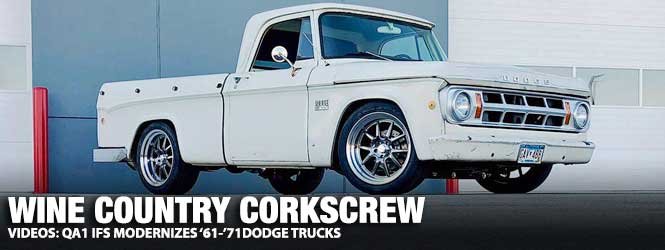
An austere Dodge D100 truck would never be considered a G-machine. However, when upgraded with cutting-edge QA1 suspension components complete with a new cross member, the truck will be better prepared to handle every corner it encounters. To modernize the pickup, QA1 has developed an industry-first bolt-on independent front suspension (IFS) for the ’61-’71 Dodge D100/D200, which lowers the truck and improves its handling.
Above Left: The QA1 ’61-’71 Dodge D100/200 Independent Front Suspension (IFS) is a complete bolt-on kit. It includes the control arms, coil-overs, rack and pinion, Mustang II spindles, and the cross member. Above Right: There are many aftermarket disc brake options, which will slow down a D100 more effectively than the 1960s brakes.
QA1 Fitment Specialist Damien Brase stated, “For Dodge truck owners, getting the truck lowered is the biggest factor in upgrading the suspension. Unfortunately, there isn’t a safe way to lower the truck six inches with an I-beam and leaf springs. But, add the benefits of improved braking and steering, and the QA1 IFS becomes a very appealing system.”
QA1 needed to find a Dodge truck to put its technology on display. Luckily, a clean-looking 1969 Dodge D100 was located in Northern California. It had been dutifully hauling barrels of fermented grapes for over fifty years at a local winery. Fortunately, the pickup remained in a factory stock condition for its entire time of service. QA1 acquired the truck and transported it to the tech center in Lakeville, Minnesota.
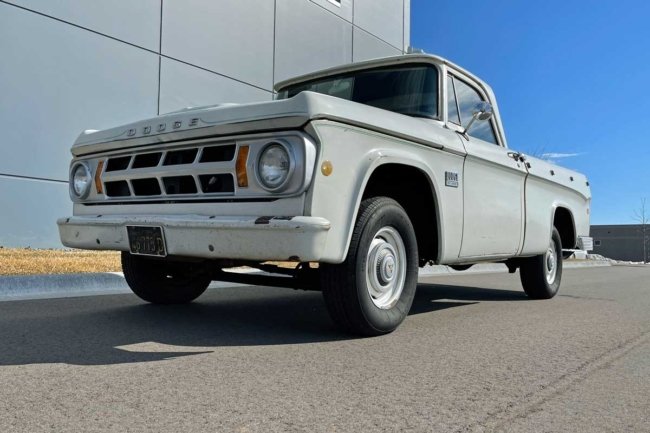
Above: QA1 picked up a ’69 D100 from California’s Wine Country. The truck hauled grapes for a winery for the last 50 years. Because it was kept in a factory stock condition by the winery, it was a perfect candidate for the QA1 suspension upgrade.
The D100 was equipped with a two-barrel 318, a Torqueflite automatic, and power steering. Having spent its life in California, it was rust-free. As a tip of the hat to its wine-country history, QA1 dubbed the D100 project, “Corkscrew.”
Upon receiving Corkscrew, the QA1 team put it through its paces. The stock truck was test-driven on the street and evaluated on a closed track (parking lot) with a series of runs through cones on a slalom course. The D100’s front and rear leaf spring suspension had ride compliance similar to an old west Conestoga wagon. The straight front axle had a non-adjustable camber (unless heating and bending equipment was available), and the kingpin angle (caster) was adjustable using wedge shims. Regardless, the straight axle was heavy and clunky.

Above: The QA1 team dubbed the D100 “Corkscrew.” Because Corkscrew was a well-maintained California truck, there were no rust concerns. The suspension disassembly would be a straightforward affair without the need to repair rust problems before the IFS installation.
Additional disadvantages of the solid axle included:
1. windup – a twisting of the axle during braking
2. side shake – a sideways motion of the axle relative to the frame
3. yaw – a rotation of the axle forward on one end and rearward on the other
4. tramp – a rotation of the axle upward on one end and downward on the other, also known as shimmy
Not only was the ride quality poor, but the steering wheel required five rotations from lock to lock. Also, looseness in the box required constant driver input to maintain the truck’s direction. The four-wheel drum brakes, which were marginally adequate in 1969, would not be able to attain the shorter braking distances of a modern vehicle. Today, there are better options for superior braking.
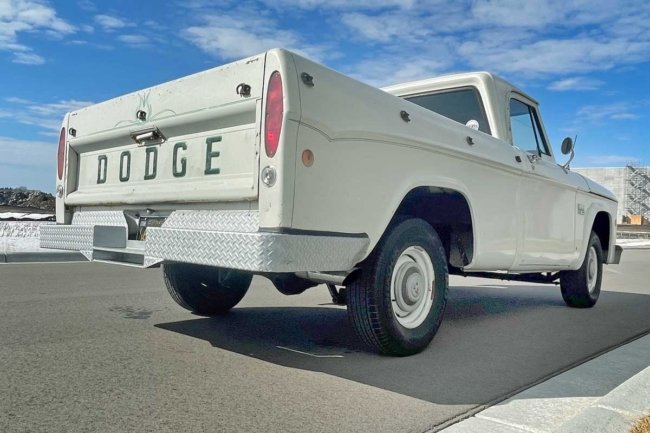
Above: Corkscrew has a stock 318 with a two-barrel carburetor. The suspension consists of leaf springs and solid axles on each end of the truck. The brakes are factory drums on all four corners.
The QA1 D100 coil-over IFS provides a lowered stance of 3- to 6-inches, which will substantially lower the truck’s center of gravity (when matched equally at the rear of the truck). In addition, the kit comes with a rack-and-pinion to tighten up the steering, and the design requires only 2.5 steering wheel rotations from lock to lock. Finally, the IFS geometry and adjustability are significantly improved compared to the factory solid beam axle.
The QA1 IFS has two choices for shocks. The first option is single-adjustable shock valving with one provision to tune compression and rebound simultaneously, sufficient for street use. The second option is the double-adjustable shock valving, which provides increased tunability to locate the ideal ride quality and outstanding performance of the IFS. The coil-over suspension is a 100% bolt-in design that does not require welding or cutting, and the system is made in the USA.
Starting the disassembly of the suspension, the QA1 technicians placed the Dodge on a vehicle lift, although the process could have been completed with the truck on jack stands. The dismantling of the front suspension required the removal of the shocks, flexible brake lines, sway bar frame brackets, and steering linkage.
Above Left: The shocks, sway bar frame brackets, brake lines, power steering box, hydraulic lines, and the leaf springs and solid axle were removed. Above Right: The parts removed were not performance-oriented pieces, but they served a purpose for 50+ years.
Once the QA1 techs eliminated the steering components, they lowered the truck until the front tires contacted the shop floor. Afterward, the two leaf spring hanger bolts and the two shackles were removed, and the techs gently pried the leaf springs from their mounting points. Finally, the springs popped free, and the entire front suspension was rolled out from under the truck.
With the suspension and linkage out of the way, the hydraulic lines from the power steering pump were disconnected. The loosened lines along with the steering box were slipped from the chassis. Lastly, the techs detached the upper shock mounts. The leaf spring hangers could be deleted from the frame, but their removal would be aesthetic since they would not be an interference concern with the new IFS. After a thorough wipe down of the chassis to provide a clean installation surface, Corkscrew was ready to receive the QA1 IFS.

Above: Even though Corkscrew was relatively clean, removing parts can loosen plenty of debris. On top of that, eliminating hydraulic lines and swapping an oil pan can make quite a mess. The QA1 techs kept the work area clean.
The QA1 suspension requires a rear sump oil pan, so the factory front sump pan must be swapped for a ’72-‘93 D100 oil pan or an aftermarket rear sump unit for an LA engine. The QA1 techs pulled the starter and the torque converter inspection shield before taking off the pan. With the shield out of the way, there was unobstructed access to the rearmost pan bolts. The technicians decided to use a factory-style pan. Once installed, the shield and starter were reattached to the transmission.
After the pan swap, the new cross member was installed. It was located based upon a factory brake line hole in the frame. After a few taps with a hammer and a block of wood, the cross member was adequately situated, and it was secured to each frame rail with a single bolt and nut. Next, six holes were drilled through the pre-drilled cross member and into each frame rail. Finally, twelve additional bolts and nuts clamped the cross member to the chassis.
Above Left: The cross member bolted to each frame rail with seven fasteners. QA1 offers two different coil-over-shock designs, a single- or a dual-adjustable. Above Right: The IFS and the suspension components have been installed. The steering shaft to the rack and pinion has yet to be cut and installed.
The pace of the assembly quickened once the drilling was done. The short-long arm (SLA) upper and lower control arms, Mustang II spindles (with 2-inch drop), and coil-overs were installed. The coil-overs provide adjustability to fine-tune the ride height. QA1 elected to mount a pair of double-adjustable shocks. These shocks have separate valving for jounce (upward movement of the suspension – compression) and rebound (downward movement of the suspension – extension), which allows for more precise ride quality adjustment.
The spindles were paired with Wilwood rotors and calipers. The QA1 techs installed the fully assembled spindles to the upper and lower control arms. The suspension and Mustang II spindles are compatible with many aftermarket front brake kits.
Above Left: Corkscrew rides on a set of Rocket Racing Wheels wearing 295/40R20 tires. The front end was adjusted for a 6-inch drop. The rear, although not part of the story, was lowered an equal distance to match the truck’s front end. Above Right: After any suspension work is performed, a 4-wheel (or thrust) alignment is necessary to set the alignment angles to minimize vehicle pulls to one side, rapid tire wear, squealing tires, or crooked steering wheel while driving straight.
Before the rack-and-pinion was installed, a pair of rack extenders needed to be added. The extenders were attached between the rack and each inner tie rod end to provide the correct length. With the extenders fitted, the power rack-and-pinion housing was installed to the pre-drilled locating holes on the cross member.
The kit includes U-joints, a column adapter, and a mounting bracket to attach the steering column to the pinion. The shaft is a cut-to-fit component, so measure twice and cut once. The parts were mocked into place, and once the technicians were confident everything was correct, the U-joint bolts were torqued to specifications.
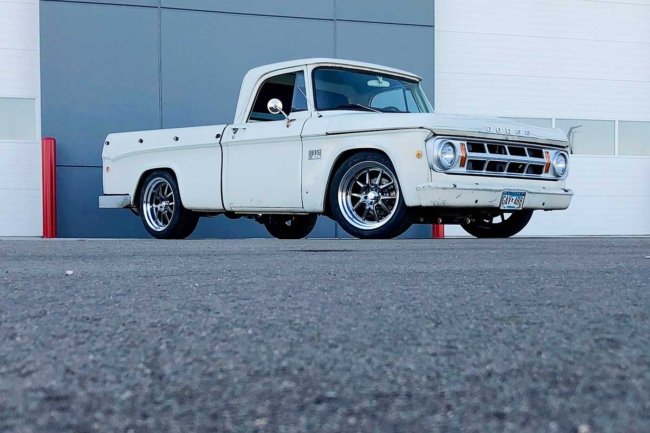
Above: QA1’s transformation of Corkscrew has provided a D100 with a lowered, aggressive stance. The IFS upgrade brought the truck into the 21st century with a fully adjustable suspension, power rack and pinion steering, and front disc brakes.
Confident in the cross member’s installation, the techs performed a final torque of the suspension components before installing a set of Rocket Racing Wheels wrapped by 295/40R20 tires. The front end was adjusted to a 6-inch drop, and although not part of the story, the rear was treated to a modified leaf spring flip kit, which resulted in a matching 6-inch drop. The transformation of the ride height has taken Corkscrew from a hit-the-trails look to an in the weeds boulevard cruiser.

Above: QA1 has plans to install rear disc brakes and an adequately matched master cylinder to Corkscrew. In addition, there is a plan to slip a Gen3 Hemi between the fender wells and install a complete Mopar drivetrain into the truck. With a completion date in April ’22, QA1 plans to run Corkscrew at the 2022 Hot Rod Power Tour.
While all the planned upgrades for Corkscrew are not done, it has come a long way in a short period. Additional changes will include a pair of Wilwood rear disc brakes and a properly-sized Wilwood master cylinder to provide an appropriate pedal travel distance and feel. Also, rumor has it Corkscrew will be the recipient of a Gen3 Hemi and a matching driveline to handle the Hemi’s torque.
The thrash on Corkscrew will continue with a target completion date in April, and QA1 plans to have the D100 participating in the 2022 Hot Rod Power Tour. Meanwhile, watch QA1’s Corkscrew videos and check out the latest QA1 products for the D100/200s and the A-, B-, and E-bodies.












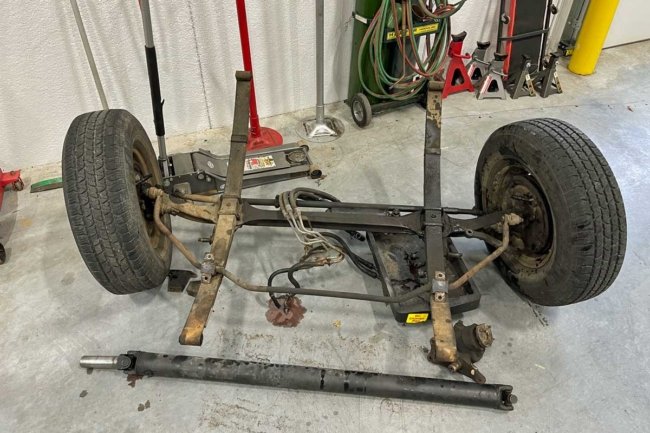






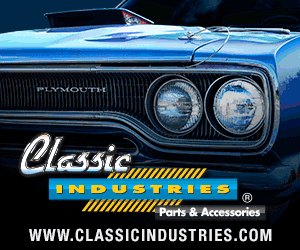

 Mopar Connection Magazine – The ONLY Daily Mopar Magazine © 2022. All Rights Reserved. Mopar Connection Magazine is the ONLY daily Mopar Magazine bringing you the latest Mopar news, technology, breaking news, and Mopar related events and articles. Find out the latest information about Mopar, Mopar products and services, stay up to date on Mopar enthusiast news, dealership information and the latest Mopar social media buzz! Sign up for the Mopar Connection Magazine newsletter for the latest information about new products, services and industry chatter. Mopar Connection Magazine is the best and only source you need to be a Mopar industry insider!
Mopar Connection Magazine – The ONLY Daily Mopar Magazine © 2022. All Rights Reserved. Mopar Connection Magazine is the ONLY daily Mopar Magazine bringing you the latest Mopar news, technology, breaking news, and Mopar related events and articles. Find out the latest information about Mopar, Mopar products and services, stay up to date on Mopar enthusiast news, dealership information and the latest Mopar social media buzz! Sign up for the Mopar Connection Magazine newsletter for the latest information about new products, services and industry chatter. Mopar Connection Magazine is the best and only source you need to be a Mopar industry insider! by
by